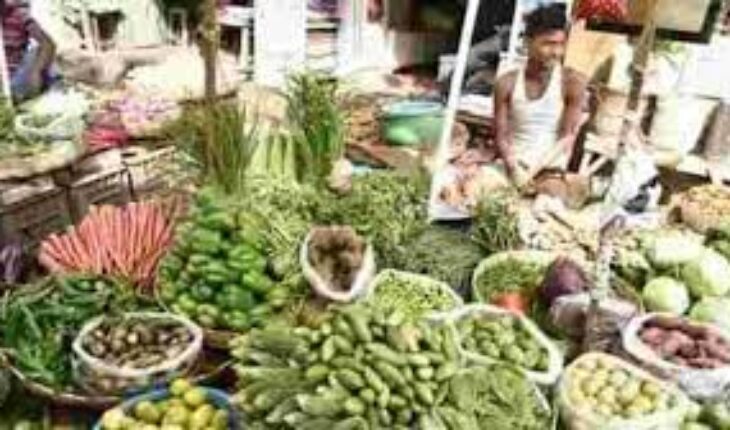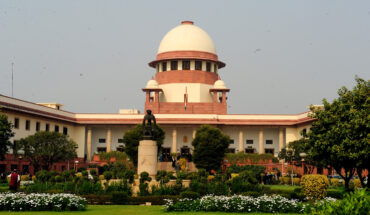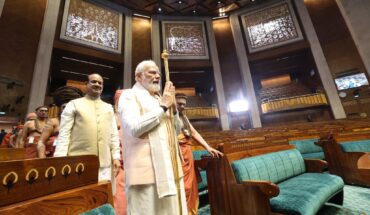By Dominick Rodrigues
Mumbai: India’s inflation is at the crossroads of uncertainty where – in the new normal, uncertainty is the only certainty+” notes Sreejith Balasubramanian, Economist – Fund Management, IDFC AMC, amidst the questions like “whether inflation could throw up new challenges in FY22, what could be its various drivers and how would this impact forecasts?”
“Our inflation frameworks suggest the current landscape is one of rising price pressures from goods and, more recently, from services but these still seem quite concentrated, particularly for services. Various factors like input costs, price hikes, health of the services sector, INR/USD, crop output, government tax and supply management strategies, etc. could impact inflation but the current path of the pandemic and vaccinations make it highly uncertain, despite the economic hit from the second wave unlikely to be as big as in 2020.”
“Thus, forecasting inflation based on the recent past — as price pressure patterns are changing fast and diverging from longer-term trends — could be more about views, less about data and consequently have a higher margin of error. We see a similar issue in deciphering India’s medium-term inflation dynamics too as real-time detailed data on labour markets and to gauge economic scarring are unavailable and the hit from Covid is not yet over. In the new normal, uncertainty is the only certainty.”
India’s Consumer Price Index (CPI) inflation averaged 6.2% y/y in FY21, with H1 at 6.7% and H2 at 5.6%. At its 07th April meeting, RBI’s Monetary Policy Committee (MPC) decided to continue with the accommodative stance as long as necessary to sustain growth on a durable basis, while noting demand-side pull on inflation remains moderate. During FY21, the MPC often observed inflation outlook was uncertain and that inflationary pressures were primarily supply shocks which would either dissipate or require proactive supply management strategies.
“Accordingly, it looked through phases of higher inflation (apart from the early period of imputed CPI data) and judged continued policy support was crucial for growth recovery. Could inflation throw new challenges in FY22? We endeavour to decipher this through various frameworks which identify the underlying trend in inflationary pressures and through factors which could drive these. However, given the uncertainties which prevail, forecasts could have a higher margin of error than usual and have to carefully interpreted.”
The current inflation landscape through our frameworks:
“First, FY22 will begin with a period of high base effect. During Apr20-Oct20, CPI ranged between 6.2% and 7.6% and the cumulative monthly momentum was 6.4% vs. 4.7% during the same period in 2019. This will aid lower y/y readings ahead. We will also be in a period of missing component level y/y data till May, given higher-level numbers were imputed during Mar20-May20 as data collection was hit due to Covid. Thus, it will be more important to track the sequential momentum in components, adjusted for seasonality”.
“Second, we look at the diffusion – total number and weights of components within various categories showing positive m/m momentum – to gauge how extensive price pressures are. We find: At the headline level, diffusion has directionally fallen since Oct20 but this masks the trend in various sub-categories. The fall was mainly led by disinflation in food items.”
“Price pressures in core CPI have been rising, barring the most
recent fall, driven by both goods and services: Scale of price
pressure in certain categories, e.g. fuel & light, has actually eased
of late but the high value of positive readings concentrated in a
few sub-components has kept their overall contribution high. In
such cases, it is to be seen whether this concentrated momentum
eases, how other sub-component prices evolve, etc.”
“Third, splitting the CPI inflation into goods and services baskets, we see: Headline CPI follows goods inflation closely given its 77% weight in the overall basket. So, if we exclude food and beverages from goods, we see prices have been rising steadily.”
“In services, even after we exclude housing and mobile telephone
charges (which rose 15-16% consistently in 2020), we see core
services prices have also been rising for a while (reinforces higher
diffusion in services discussed above), but its weight in the CPI
basket is only 11.4%. For it to meaningfully impact headline CPI,
magnitude of readings has to rise quite sharply, alongside higher
diffusion.”
“However, recent RBI research suggests services prices being
the relatively sticky component in the CPI basket can spill over to
goods prices and result in generalised price pressures. Within
services, momentum in personal care and recreation services has
been strong for quite some time while that in household services
has picked up only more recently.”
“Fourth, to understand core price pressures better, we construct trimmed means of the headline, core goods and services CPI categories. For e.g., the 10% Trimmed Mean (TM) is based on 80% of the category-basket as it excludes 10% each of the highest and lowest y/y readings. It is thus an unconventional measure of core inflation defined by exclusion of dynamic components based on their readings each month. It does not pre-define static components for exclusion from the headline as in (for e.g.) CPI ex-food & beverages fuel & light.”
Key inferences are:
For goods excluding food and beverages, the 10% TM is well below the main index, suggesting concentration of net price pressure in just the top 10% of items, which pushed the TM down. However, the gap has fallen since Sep20.
For services, the 10% TM was above the main index till Nov20 but fell sharply in December and has stayed below the main index. This suggests sudden and sharp price pressures concentrated in the top 10% of service-components which pushed the TM down only recently. Thus services price pressures seem to be manifesting but sharp rises seem to be concentrated and not broad-based for now, even more compared to core-goods.
In terms of categories, for core goods, higher price pressures seem to be mainly concentrated in pan, tobacco and intoxicants, gold & silver, petrol & diesel. For services, this seems to be mainly in transport.
Thus, the above frameworks suggest prices pressures (even ex-food and beverages) have been rising. This is visible in the total number & weights of items showing positive price momentum and various compiled sub-categories of core goods and services. However, in terms of magnitude of readings, our trimmed means suggest these higher price pressures are still quite concentrated, particularly for services.
Various factors which could define the path of inflation are:
Input cost pressures from higher commodity prices, of which
crude oil price is the most important, could be passed on to
consumers as manufacturers’ profit margins get squeezed.
However, most of this price rise seems to be over and
incrementally it could soften if demand weakens with a rise
in Covid infections.
Some sectors skipped price hikes in 2020 and are due in 2021,
but further delay or only a partial roll out of planned price hikes is
possible if demand gets weaker, input prices ease or price
elasticity of demand moves higher.
Domestic supply constraints from rising infections and policy
response is possible but the scale is likely to be much lower.
Global supply disruptions from dearth of shipping containers in
major trade routes and manpower shortage are ongoing.
One-year-ahead inflation expectation of households has risen
since Mar20 but could be guided by food and fuel prices. Change
in INR/USD. RBI estimates 5% INR depreciation from its
baseline to increase CPI by 20bps and vice versa.
Services sector recovery has been lagging manufacturing, but
price pressures have been emerging. However, recovery could
be further delayed and recent concentrated price pressures
may find it difficult to broaden or even sustain.
A normal monsoon season, healthy reservoir levels, good crop
output during the upcoming Kharif and the following Rabi sowing
seasons could keep food prices soft.
Effective supply management strategies by the government, for
food and other goods, could alleviate price pressures. Cuts in tax
on fuel, coordinated by the central and state governments, could
help ease transport costs and prices of othergoods and services
through second round effects.
Further, demand and supply will be defined by the fact that households and companies are better prepared this time, their behavior may not be as fear-driven as before and vaccinations are progressing with the government exploring more options.
What makes the impact of these factors uncertain?
Whether, when and how the above factors play out have become uncertain.The biggest uncertainty is the path of the pandemic, which is currently in the form of a tall second wave. Any virus mutations, change in nature and pattern of infections, etc. would matter.Not having enough vaccines, at least in the short run, to keep pace with daily doses administered is an issue.
For now, the base case seems to be of government policy response to be
not as stringent and widespread as in 2020. While this is the most
reasonable assumption, it is to be seen if and how this changes with the
path of the virus, testing, pressure on states’ health infrastructure,
measures taken by other countries, etc. All this makes incremental FY22
growth downgrades possible but the overall economic impact of the second
wave would most likely still be quite lower than that of the first wave.
Inflation forecasts with a higher margin of error
Immediate CPI readings would likely be driven by the ongoing disinflation in vegetables & cereals and base effects. The landscape of inflation, we explored through various frameworks, gives us a clear understanding of other price pressures. However, these could change faster than usual in the current backdrop and forecasting CPI beyond a few months is more about one’s view about the above factors. It is likely less data-intensive as typical seasonalities, price-pressure mix and momentum within various sub-components get challenged.
The RBI, in its recent Monetary Policy Report, noted considerable variation in price build-up across subgroups of core categories, post lockdown vs. its longer term average. We had previously highlighted some of the noise and suddenly changing drivers within core data and thus the need for careful assessment. All this makes forecasting more nuanced, view-based and implicitly widens the confidence-interval and the margin of error in estimates.
Similarly, India’s medium term inflation dynamics also will depend on various aspects like company-fatalities (and how many of them return) due to Covid, within MSMEs and the informal sector, which will impact production, labour market dynamics (actual and expected employment, wage growth and mix) and household balance sheet strength which was not solid even pre-Covid (household debt to GDP increased sharply to 37.1% in Q2 FY21 from 35.4% in Q1 FY21 as per the RBI).
Thus, the K-shaped recovery evidenced even from recent quarterly results of listed companies, the economic scarring and the impact on the wage-cycle it causes will have consequences for medium-term inflation through first and second round effects (or its absence). Unfortunately, we don’t have real-time data to measure this and the impact from Covid is not yet over. Further, whenever recovery gets stronger, a partial but strong shift in consumption from goods to services is possible. This, alongside the price setting cycle for goods and services, will impact overall inflation.
For FY22, consensus on average CPI inflation has been in the 4.5-5.0% range. More recently, it has inched down from the higher end of this band and thus below the RBI’s latest forecast of 5%. Most of these estimates do not assume any major episodes of supply-related food inflation spikes, which are nearly impossible to predict even in normal times, or a major price impact from Minimum Support Price (MSP) hikes based on the experience in recent years. More importantly, any major incremental changes in monetary and fiscal policies from that broadly envisaged currently, if India’s cyclical recovery gets hit materially, is currently not factored in as it is still very early days.






